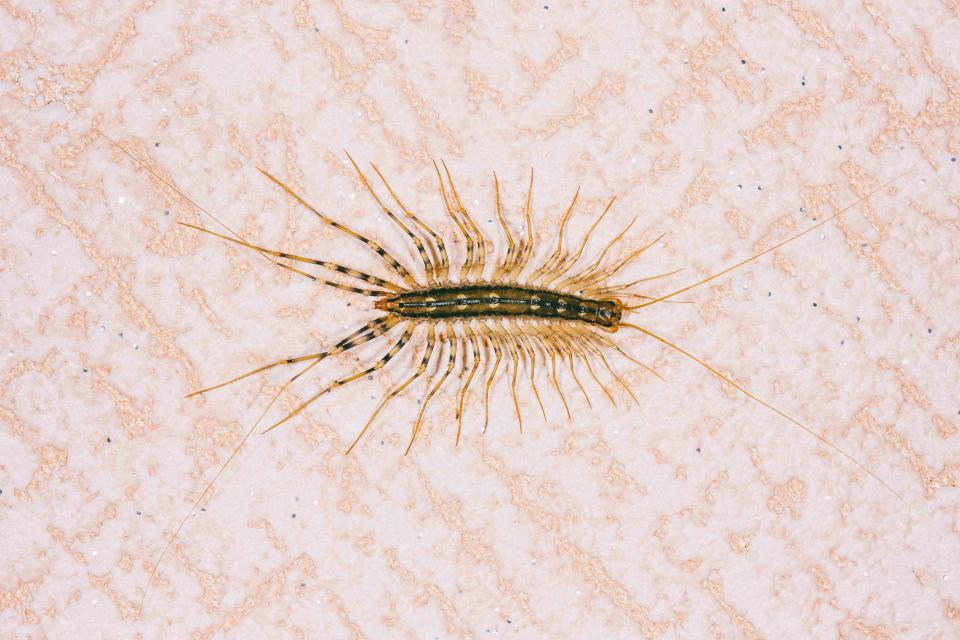How to Get Rid of Centipedes—and Keep Them From Coming Back
The ick factor is high with these creepy-crawlies.

Gutaper/Getty Images
Centipedes definitely tend to bring out squeamishness in people who encounter them, thanks to their multiple legs and their tendency to pop up in dark corners of your yard or house. Odds are, if you do encounter them in your house, you're looking for a way to get them back out.
Here's everything you need to know—including strategies for how to get rid of centipedes and keep them out of your house in the first place.
What You Need to Know About Centipedes
While many people lump them in with insects, they're actually not (as evidenced by the many, many legs). They come from a different class of animals called Chilopoda.
They tend to come out more at night, according to Thomas Dobrinska, BCE, PHE, and technical service manager at Terminix. "Centipedes hide during the day in moist and shady places such as under stones, logs, and in the mulch. They are very good climbers and can either go up outside walls or follow tree branches that contact the home."
Centipedes can bite you and produce a venom that will cause a bee sting-like reaction, so you probably don't want to be handling these guys (or trying to squash them bare handed).
What Attracts Centipedes in Your Home?
Like earwigs and many other pests you might find in your house, clutter, other insects, and dampness can attract them. They may also be attracted to outside lights, as they often feed on the insects that are attracted to the lights.
How to Get Rid of Centipedes
Unlike some other pests who are just looking for a cozy spot to hide away during the winter, centipedes are more than happy to take up residence in your house or crawlspace full time. "They can survive for long periods of time on the interior of the home, especially if there is adequate clutter, humidity, and an abundance of other insects in basements and crawlspaces," Dobrinska says.
Declutter (this gives centipedes fewer places to hide)
Reduce humidity
Minimize other insects and spiders, as that's a food source for centipedes
Vacuum or squash them as you find them (this can help control the populations)
Use an insect barrier treatment
If after these methods you still keep finding centipedes, Dobrinska recommends contacting a licensed pest control professional. They can help you create a treatment plan that'll get rid of the centipedes in your home now, and help keep them out in the future.
How to Prevent Centipedes and Keep Them Out of Your House
The key step toward getting rid of centipedes in your house, is to never let them in in the first place. You'll want to make your home—and the exterior immediately surrounding it—less attractive to centipedes to encourage them to leave.
"The key to prevention is to remove mulch, leaf debris, splash guards, stones, and landscape timbers from around the structure," Dobrinska says. "Ensure water is diverted away from the structure. Using sodium vapor light bulbs is also less likely to attract centipedes or the insects they feed upon."
Indoors, that means running dehumidifiers to keep moisture levels in balance, fixing any spots where there is leaking water that could create that dampness centipedes love, and decluttering your basement and other spaces to give centipedes fewer dark places to hide.
And Dobrinska also recommends sealing cracks and crevices, screening weep holes, and repairing screens to help avoid giving them access to your house.
For more Real Simple news, make sure to sign up for our newsletter!
Read the original article on Real Simple.

